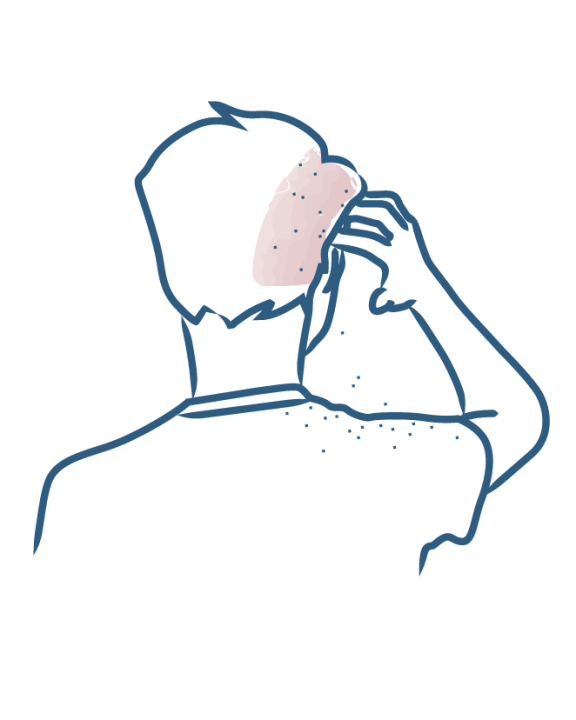-
Your concerns
Our articles to help you gain a better understanding
-
Our solutions
-
Ducray Dermatological laboratories
Our articles to help you gain a better understanding

Over 50% of adults can be affected by dandruff(1). There are two types of dandruff: oily and dry. How can you know which is which? How can you get rid of oily dandruff?
Before deciding whether you have oily or dry dandruff, you must first understand what dandruff is!
It is a phenomenon of accelerated desquamation, caused by different mechanisms: deregulation of sebum production resulting in proliferation of yeast on the surface of the scalp, combined usually with a scalp more susceptible to developing dandruff.
Itching and desquamation are phenomena that self-sustain the mechanisms of dandruff formation. This is why it is important to find the most appropriate treatment in order to break this vicious circle.
There are two types of dandruff: oily and dry.
Oily dandruff is distinguished from dry dandruff by its appearance and origin.
It develops on an oily scalp, and is larger in size because it clumps together. The excess sebum secreted at the surface acts like a glue, which is why it remains attached to the hair and forms dandruff patches of varying sizes.
This sebum-rich environment promotes the development of yeasts of the genus Malassezia, which accelerate desquamation and cause local inflammation responsible for itching.
There are many treatment shampoos on the market for eliminating dandruff. You will find shampoos formulated specifically for oily dandruff in the ranges offered in pharmacies. Like those formulated for dry dandruff, they absorb and regulate excess sebum. These shampoos also have an antifungal action to fight Malassezia yeasts, which contribute to the formation of dandruff.
(1) Byung In Ro and Thomas L. Dawsonw, The Role of Sebaceous Gland Activity and Scalp Microfloral Metabolism in the Etiology of Seborrheic Dermatitis and Dandruff. Department of Dermatology, College of Medicine, Chung Ang University, Seoul, Korea;
Loose dandruff conditions, DS, pso

Dry / oily loose dandruff

Dry / oily loose dandruff
NEWSLETTER
Dermatological expertise
To better understand your skin and hair, discover our exclusive content and innovative care products designed to improve your quality of life..